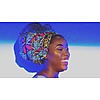Interesting facts about Gabon
Posted by khethiwe qotyana on 06 April 2018, 09:55 SAST

Gabon is a country located on the west coast of Central Africa.
The official name of the country is the Gabonese Republic.
It is bordered by Equatorial Guinea to the northwest, Cameroon to the north, the Republic of the Congo on the east and south, and the Atlantic Ocean to the west.
The official language is French.
As of 1 January 2017, the population of Gabon was estimated to be 1,783,929 people.
It is the 76th largest country in the world in terms of land area with 267,667 square kilometers (103,347 square miles).
Libreville is the capital and largest city of Gabon. The city is a port on the Komo River, near the Gulf of Guinea, and a trade center for a timber region.
Gabon can be divided into three distinct regions: a narrow coastal plain, a hilly mountainous interior, and a savanna in the far-east and south.
About 85 percent of the country is covered by tropical humid forest.
Mont Iboundji at 1,575 meters (5,167 feet) above sea level is the highest mountain in Gabon.
Gabon has 885 kilometers (550 miles) of coastline.
Gabon’s Atlantic Coast offers some beautiful deserted beach areas, suitable for different kinds of water-based fun. Pointe Denis and Ekwata to the north and Mayumba and Sette Cama in the south are great places to enjoy the sun and gentle waves. Other noteworthy places to visit include Port Gentil and Cap Estérias, as well as Perroquet, which is great for skin diving.
The network of protected areas in Ethiopia covers about 22% of the national territory (58,900 square kilometers / 22,750 square miles). It is made up of 13 national parks, plus nature reserves, game reserves and other types of protected areas.
Loango National Park is the jewel in the crown of Gabon’s 13 parks and offers one of the world’s most exhilarating safari experiences, thanks to its irresistible combination of scenery and wildlife. With more than 175 km (110 miles) of uninhabited shoreline, it is widely regarded as one of Africa’s last great coastal wildernesses. Lagoons, forests, savannahs and wetlands all come together within the park’s 1,550 square kilometers (600 square miles). It offers the unique opportunity to observe elephants, buffalos, hippos, gorillas and leopards venturing onto the white sand beaches.
Lope National Park is situated right in the centre of Gabon and was the first protected area following the creation of the Lope-Okanda Wildlife Reserve in 1946. When the country’s President declared the creation of 13 national parks in 2002, Lope National Park was included. Although the terrain is mostly rain forest, in the north the park contains the last remnants of grass savannas created in Central Africa during the last Ice Age, 15,000 years ago. In 2007, the Lopé-Okanda landscape was added to the World Heritage List by UNESCO.
Gabon has important populations of many mammals including about 35,000 gorillas, 50,000 forest elephants and 64,000 chimpanzees. About a quarter of Africa’s gorillas live in Gabon. Other animalsinclude hippos, forest buffalos, various antelope and monkey species, leopards, three species of crocodiles and several sea turtle species which nest along the coast.
Kongou Falls is a massive cataract about 3.2 kilometers (2 miles) wide and up to 56 meters (184 feet) tall, located in Ivindo National Park in eastern Gabon. It is located on the Ivindo river and is one of the strongest-flowing waterfalls in the world with an average flow of 900 cubic meters per second. It is reputed to be the most beautiful waterfall in Central Africa.
L’Eglise St Michael, or the Cathedral of Saint Michael is a phenomenal masterpiece. Known for its 31 tall, wooden carved columns that depict various biblical scenes. A blind man is said to have carved the columns. The artistic columns are maintained and truly a sight to behold. It is one of the most prominent landmarks and tourist attractions in Libreville.
Little is known of the history of Gabon prior to European contact.
The earliest inhabitants of the area were Pygmy peoples. They were largely replaced and absorbed by Bantu tribes as they migrated.
Portuguese explorers and traders arrived in the area in the late 15th century. The coast subsequently became a center of the slave trade with Dutch, English, and French traders arriving in the 16th
century.
In 1839 and 1841, France established a protectorate over the coast. In 1862-1887, France expanded its control to include the interior, and took full sovereignty.
In 1910 Gabon became part of French Equatorial Africa and in 1960, Gabon became independent.
In the early 1990s, Gabon introduced a multi-party system and a new democratic constitution that allowed for a more transparent electoral process and reformed many governmental institutions.
Gabon’s economy is dominated by oil. The country depended on timber and manganese until oil was discovered offshore in the early 1970s.
Gabon enjoys a per capita income four times that of most nations of sub-Saharan Africa, its reliance on resource extraction industry releasing much of the population from extreme poverty.
A country with a primarily oral tradition up until the spread of literacy in the 21st century, Gabon is rich in folklore and mythology.
Major religions practiced in Gabon include Christianity (Roman Catholicism and Protestantism), Bwiti, Islam, and indigenous animistic religion.
Mask making and ritual face paint are important parts of Gabonese culture, and styles vary dramatically between groups. The Gabonese people use masks to praise the ancestors and to mark
important life events by signifying transformation. They are part of funeral and agrarian rites, and Gabonese people use them to promote fertility, provide spiritual protection and express cultural
identity.








